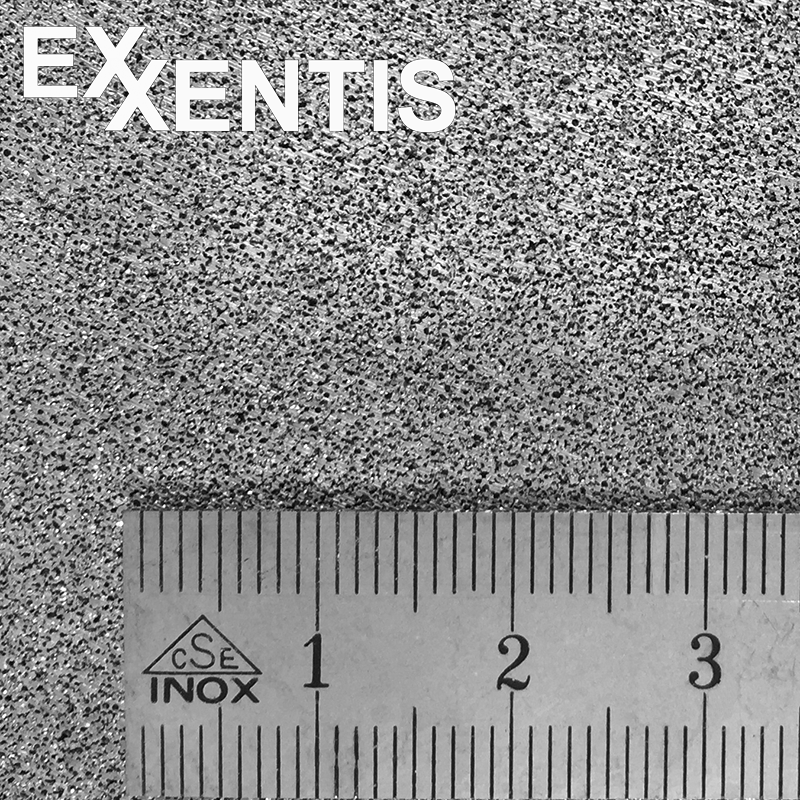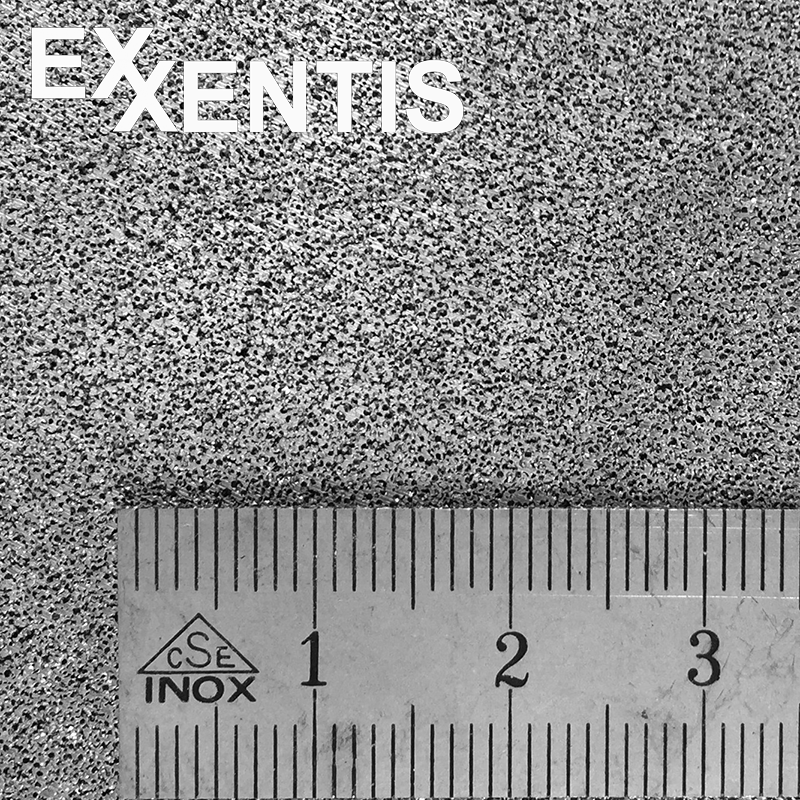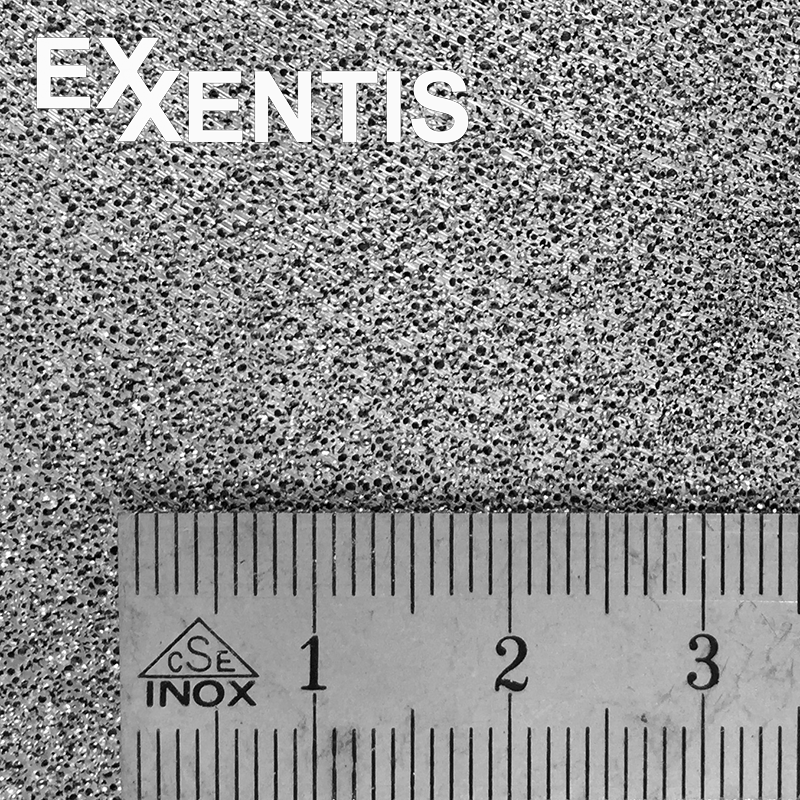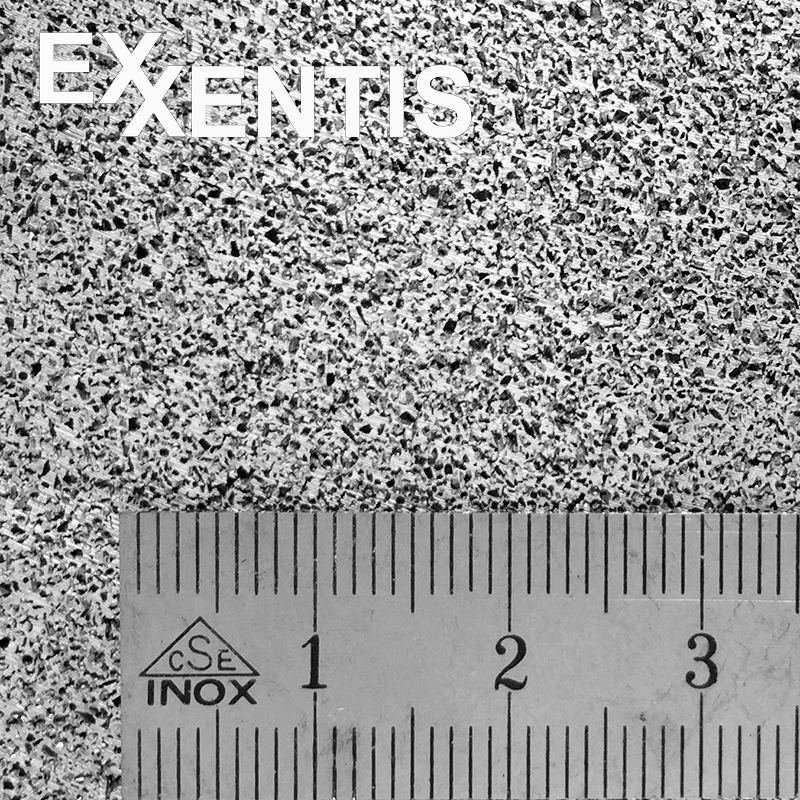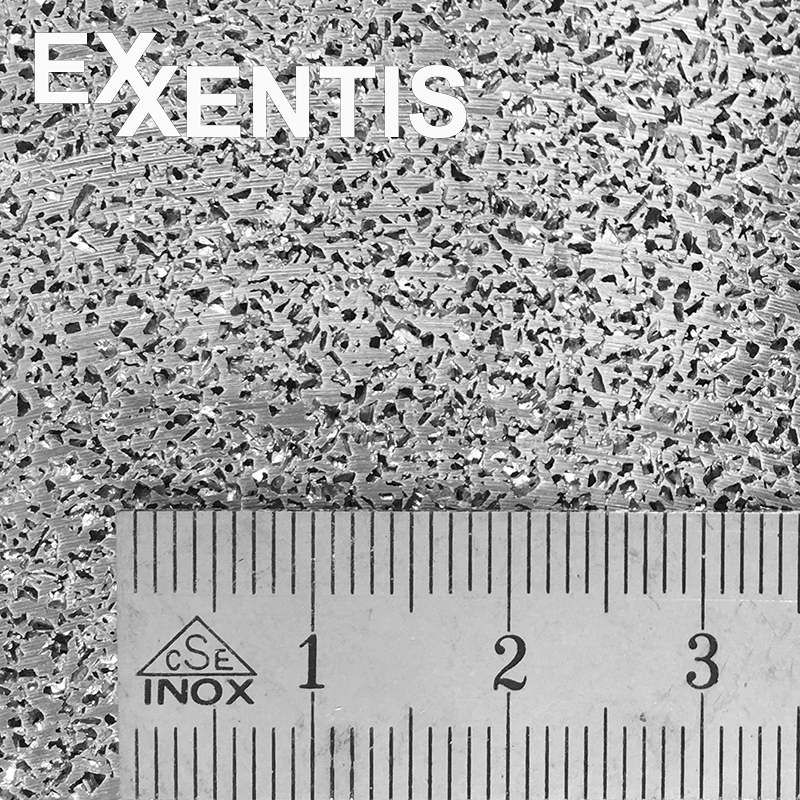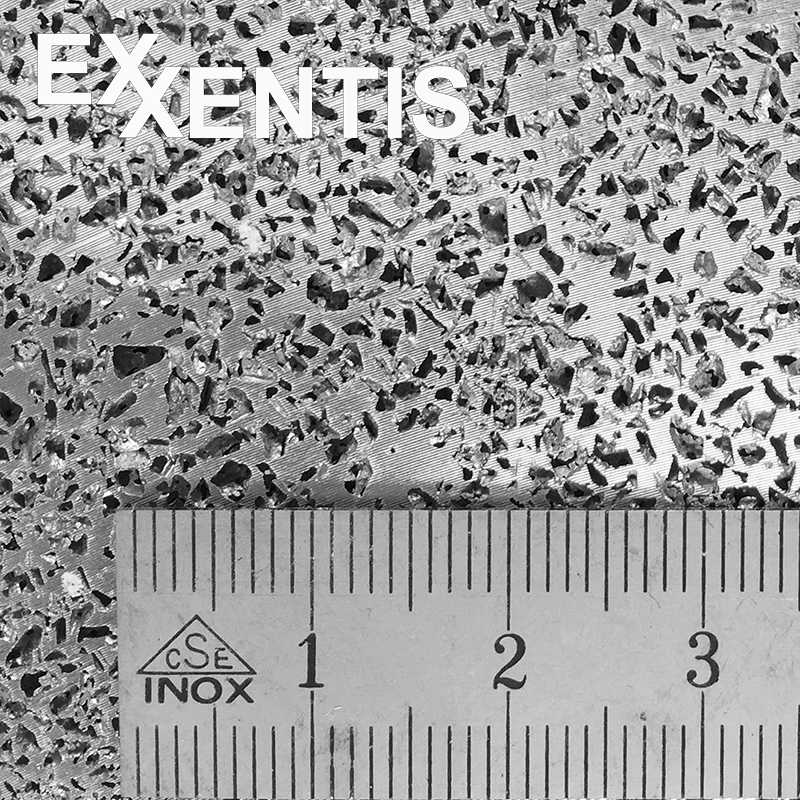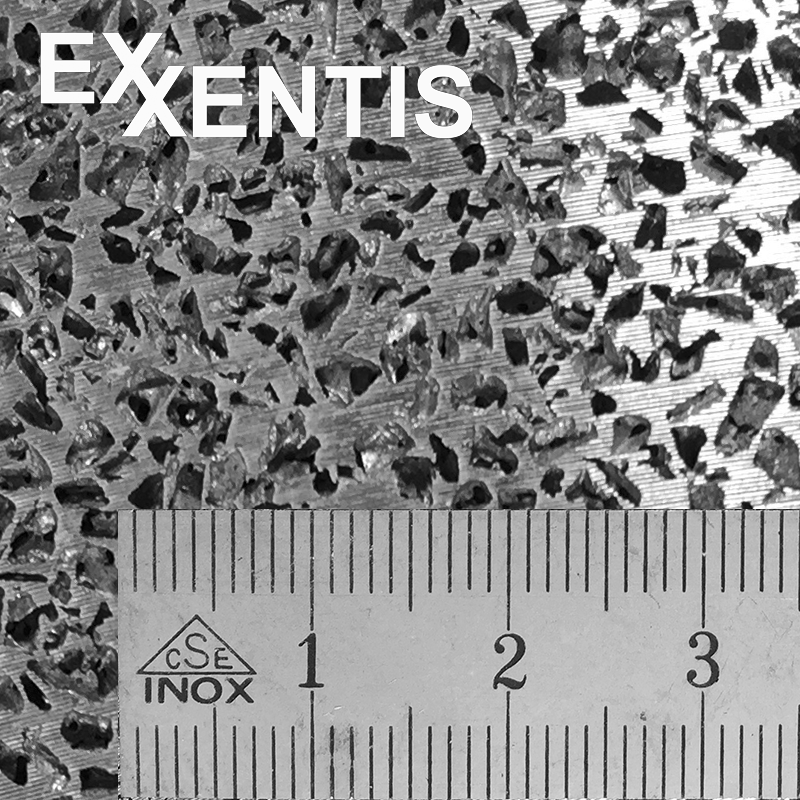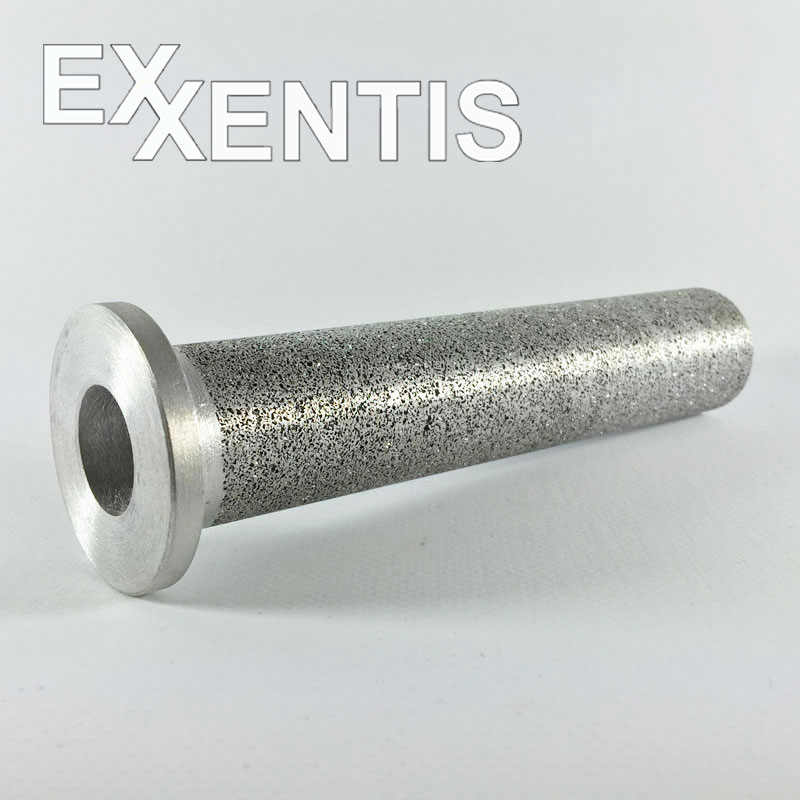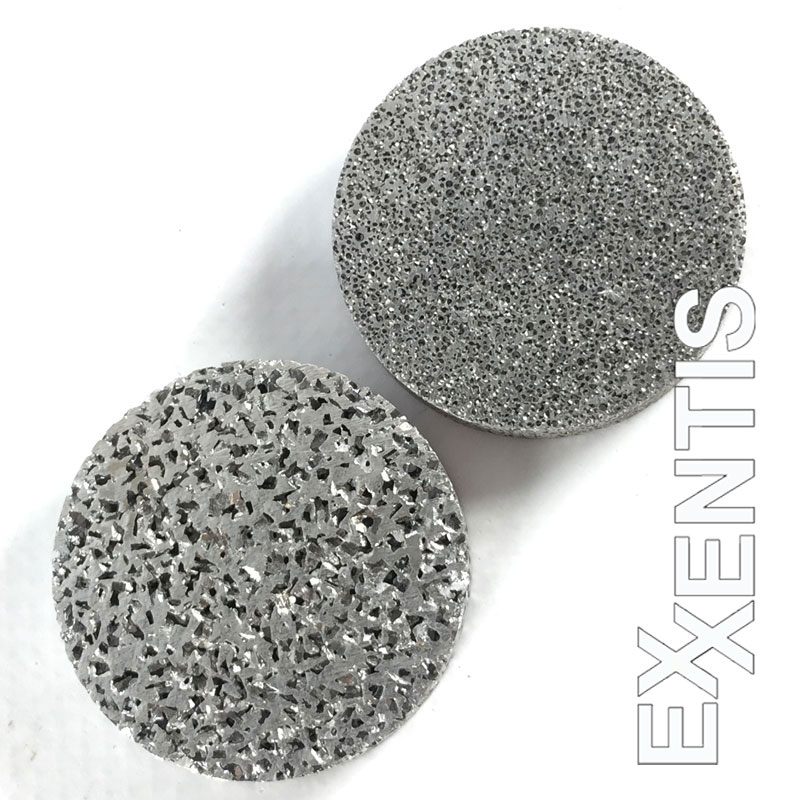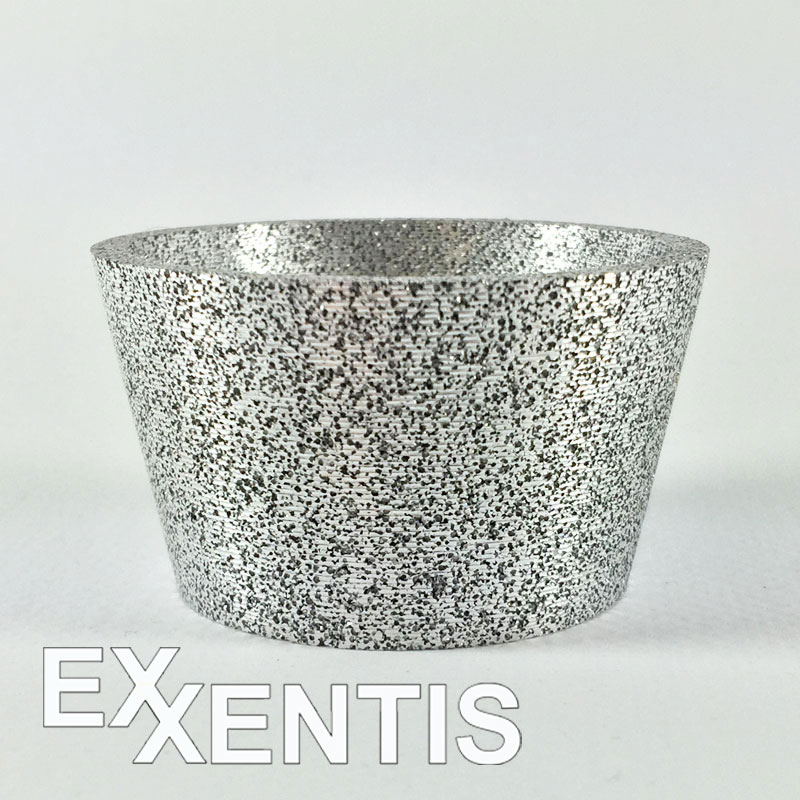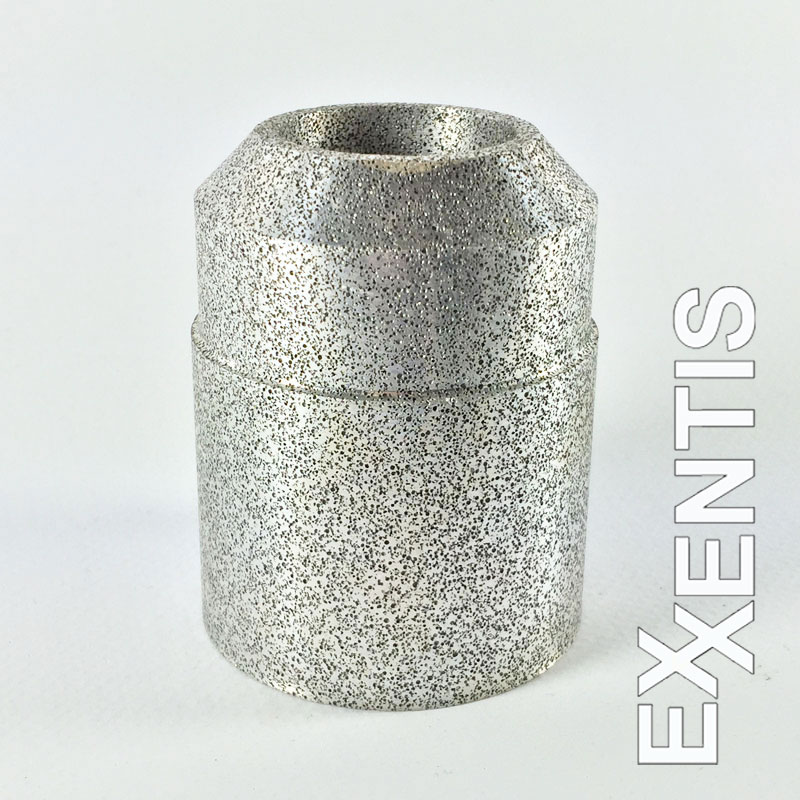Properties of porous aluminium
Material properties of porous aluminium form the unique combination:
all products are permeable over their entire volume
can be produced up to large formats and in any shape
high strength thanks to cast structure
high and controllable volume porosity
different and controllable pore sizes
a homogeneous distribution of the pores over the entire volume
Porous aluminium is obtained by casting molten aluminium together with crystal salt. The salt is subsequently washed out. Depending on the size of the salt grains, porous aluminium with different pore sizes is obtained.
Exxentis AG has developed seven standard types of porous aluminium, with pore sizes from 0.20 mm to 4.00 mm, which are presented in the table below (click on image to enlarge).
The properties of porous aluminium depend on the pore sizes of the material and on the technical parameters during the casting process. The table below shows the material properties of the seven standard pore sizes. Please note that some of the parameters can be changed at the customer’s request by individually selecting the salt combination and varying the technical casting parameters.
| Item | Parameter | No. 1 | No. 2 | No. 3 | No. 4 | No. 5 | No. 6 | No. 7 |
| 1 | Pore size, mm | 0,20 – 0,35 | 0,30 – 0,50 | 0,40 – 0,63 | 0,40 – 1,00 | 0,63 – 1,60 | 0,63 – 3,00 | 0,63 – 4,00 |
| 2 | Filter grade, µm | 40 – 50 | 50 – 60 | 70 – 90 | 150 – 200 | 300 – 400 | 500 – 600 | 600 – 700 |
| 3 | Volume porosity, % | 55-65 | ||||||
| 4 | Specific surface area, m2/m3 | approx. 10’000 | approx. 8’000 | approx. 6’000 | approx. 4’000 | approx. 3’000 | approx. 1’200 | approx. 1’000 |
| 5 | Compressive strength, N/mm2 | 39 | 35 | 28 | 24 | 21 | 20 | 19 |
| 6 | Tensile strength, N/mm2 | 26 | 21 | 16,4 | 15,3 | 8,3 | 7,6 | 7,2 |
| 7 | Density, g/cm3 | 1,00 – 1,20 | ||||||
| 8 | Cell structure | all pores are open, d min = filter grade, D max = pore size | ||||||
| 9 | Operating temperature, °C | from -200 to +250…550 | ||||||
| 10 | Melting-point, °C | approx. +600 | ||||||
| 11 | Hardness, HB | 67 – 71 | ||||||
| 12 | Thermal conductivity, W/(m*K) | 30 – 50 | ||||||
| 13 | Aluminium alloy | AlSi7Mg | ||||||
| 14 | Cleaning, maintenance | backwash, ultrasound, mechanical and chemical cleaning | ||||||
| 15 | Permeability coefficient K, m2 ≥ | 7,00E-12 | 8,50E-12 | 3,10E-11 | 7,50E-11 | 1,45E-10 | 2,25E-10 | 2,60E-10 |
You can use the flowability coefficient K (from the table above) to calculate the volume flow. The Darcy law is used for this:
К * ΔP * S
Q = ————–,
μ * H
Q – Flow rate, m3/sec
ΔP – Differential pressure at filter, Pa
S – Filter area, m2
μ – Dynamic viscosity, Pa*sec
H – Filter thickness, m

